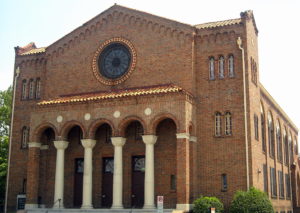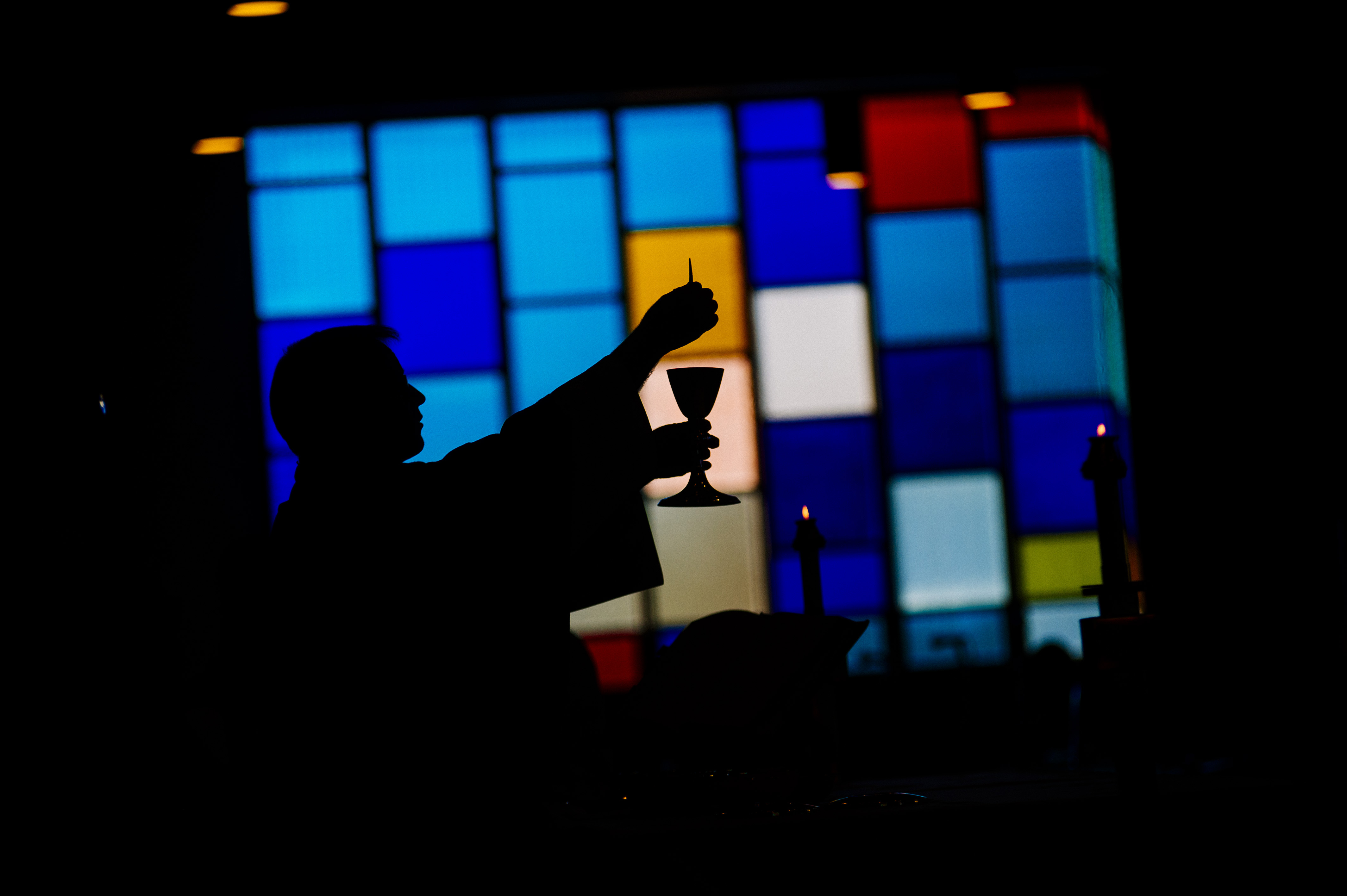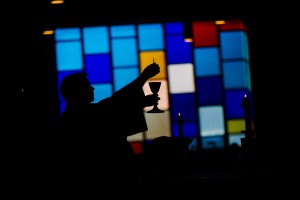
As I walk or drive through my Capitol Hill neighborhood here in Washington, D.C., I pass by more than twenty churches (all of them Protestant) that have been closed in the past decade. Many of them are grand and prominent buildings. (Click here to see four of them.) Most of the them have been converted to condominiums, likely due to historic preservation norms that seek to retain the exterior appearance of historic buildings.
A recent study by the local non-profit organization Sacred Spaces Conservancy confirms my anecdotal evidence about the large number of closures. On Capitol Hill, a growing neighborhood with a tremendous number of row houses, about 40 percent of buildings used for worship have closed [*]. Such a figure is shocking and demonstrates a collapse of religious observance. Our Catholic parishes have suffered as well, but thankfully none of them have closed.
As always, there is important detail behind the numbers. At the root is a dramatic demographic shift in the population of the District of Columbia. The once majority-black city is no longer so; African-Americans now make up less than 50 percent of the population. The new arrivals to the city are also younger. To say that the city is undergoing gentrification is not really accurate. The majority of the new residents are not gentry at all; they are largely young adults, saddled with college debt and unable to afford to own property. The median home price in this area is close to one million dollars. Because most of them do not have the means to buy a home, they rent, and even then must usually share with others to make it affordable.
This is the new demographic reality: A once solidly African-American area is now more racially diverse and younger as well. The new residents are in general less religiously observant and those who are “religious” are less tied to particular denominations or congregations. This is a challenge to institutions established in a very different world.
This has affected Protestant and Catholics in different ways.
The Protestant Experience:
There are reasons that the Protestant congregations have been more affected by the changes than the Catholic parishes. In general, Protestant denominations were and are divided in that they served specific groups defined by both racial and sectarian lines. For example, there might have been ten “Baptist” churches in a fairly small area, but they weren’t serving just different Baptist denominations; there were White Baptists, Black Baptists, Primitive Baptists, Free Will Baptists, and so forth. Add to this a slew of other denominations and distinctions such as African Methodist Episcopal, Evangelical Lutheran, Missouri Synod Lutheran, High Church Episcopal, Low Church Episcopal, and Broad Church Episcopal. The city churches were built during a time when these distinctions mattered.
However, it is the racial focus of Protestant churches that looms largest of all in this city. Dr. Martin Luther King once observed that the most segregated day of the week is Sunday. This still rings largely true. It wasn’t just race, it was the length of the service and styles of worship, preaching, and music. Black churches in solidly black neighborhoods could flourish in many varieties from storefront churches to megachurches to historical “anchor” churches such as Metropolitan Baptist and Foundry United Methodist. African-American congregations that identify strongly with black traditions of worship have not adjusted easily to the demographic shifts of recent years. Thus, they face the choice of either moving to where their congregants have moved or closing. It isn’t just “inflexible” niche marketing that is the problem; whites who move in are not easily persuaded to attend their services. Whether it is liturgical style, preaching content, or just the “awkward” experience of being a minority, whites and other non-African-American arrivals don’t join in large enough numbers to shore up a declining congregation.
In short, the combination of changing demographics and denominational division has spelled disaster for many traditionally black congregations. Some of them have moved to the suburbs; others have closed. Focusing on a niche market is a problem when the niche disappears or moves away.
As for the mainline (largely white) Protestant churches, I would argue that a collapse of faith has depleted them, at least collectively. Many of them ceased preaching the “old time religion” a long time ago, having largely assimilated to a post-Christian world and acclimated to the sexual revolution. Gone are the moral demands of the gospel, which have been replaced by a social “gospel.” Gone is the drama of salvation. Jesus is less Lord and Savior and more a good man and ethical teacher. For those who think the Catholic Church should chart a similar course, please note that as much as we have declined, the mainline Protestant churches have collectively seen an utter collapse in attendance [**].
The Catholic experience:
The experience of the Catholic parishes on Capitol Hill has not been ideal, but it is better, and we can survive collectively. There are reasons for this.
Our first commitment is generally to serve a neighborhood or region. In a certain sense, the whole world is divided up into parishes. Every diocesan parish has a boundary. Boundaries used to tell Catholics where they should attend Mass. Today, boundaries tell the Church where we are supposed to go. A parish is responsible for every person who lives within its boundaries. Thus, with few exceptions, the parish stays put whether its founding parishioners remain or move away. Although there are a few ethnic parishes here and there (mainly due to language and/or a special rite) that aim to serve only a particular group, this sort of “niche marketing” is generally frowned upon.
The Catholic Church is catholic (universal). My own parish has gone from a solidly African-American parish to one that is more than 40 percent non-African-American. In this, it is beginning to reflect the current makeup of the neighborhood, which is more racially diverse and much younger than it was. Noting this, we did a very Catholic thing. Although the changes brought stress, we went out to meet our neighbors. We knocked on doors; we talked to them in the park and at the local market. Over time we’ve adjusted to their needs; at their request we began an evening Mass that has become quite popular (it seems that younger people tend to be night owls). We still have our longer, vibrant Gospel Mass for the benefit of our traditional parishioners, some of whom have stayed in the neighborhood and others who have moved away but continue to attend Mass here on Sundays. This has been the second big sea-change in this parish and neighborhood. (The first one took place after World War II, when the neighborhood became solidly black.) Through it all, our parish stays and cares for whoever lives here.
That said, things are not nearly as good or strong as they should be in the Catholic Parishes of Capitol Hill. Not one of them has more than 1000 people in attendance on Sunday. The largest has just under 900; mine has 600; two of them have fewer than 200. Several of our schools have closed. Part of the reason for the smaller number of parishioners is that all these parishes were built before the advent of the automobile and thus are much closer to one another than is true in the suburbs. People in my neighborhood have three Catholic parishes within walking distance, with Masses offered at all sorts of different times, lowering the number in any one parish.
Yet, truth be told, all our Capitol Hill parishes were once much fuller. The parish schools were bursting with children and our rectories and convents were brimming. To some degree, the fact that all our parishes are still open is based on inertia from prior times. We were bigger than the Protestant congregations to begin with and so it’s taken longer to erode. The danger is that we are parking on someone else’s dime; the fuel that those of the past left us is dwindling to mere fumes. The generation that built our parish churches was poorer than we are in a monetary sense but seemingly richer in faith. There was a time when more than 80 percent of Catholics went to Mass weekly. Today it’s only about 20 percent and the figure has been dropping by the year. The current scandal has surely not helped, but the problem is deeper, older, and wider than that. Despite the steep drop in attendance, it has often been “business as usual”; our focus seems to be institutional more so than Christological or eschatological.
The problem is not a local one in Capitol Hill. This steep decline has occurred throughout the Western world. A secular world has, by definition, a worldly focus and little time or thought for God. The Catholic Church has not always responded well to this.
There isn’t the time to set up a complete scheme for evangelization, but as most of you who read here know, I think accommodation/watering down of the faith is precisely the wrong path. We must shine brightly in a world of increasing darkness. As Catholics and Catholic parishes, we are called to love everyone, but we must love them enough to tell them the truth. A fiery love for Christ that holds Him in awe and deeply respects His teachings must be combined with a true love for souls such that we strive to save them rather than merely pleasing them.
In a neighborhood with an increasing population, no church that was once full should close. We cannot simply blame demographics for decreasing numbers of parishioners. If every parishioner found one convert or returnee, the parish would double in size. Is that really so hard? What percentage of our parishioners can say they have ever gotten even one person to return to Church and the sacraments? Blaming demographics is a convenient excuse.
If secularism has swept in, we cannot simply lament it; we must accept the responsibility that it has happened on our watch. We must meet the challenge with fortitude and with the knowledge that the Lord built a worldwide Church with a cadre of leaders who hardly looked promising. He did it against all odds. He asks that we bring our five loaves and two fishes and promises to multiply the harvest of holiness and the numbers as well. His graces are not exhausted, and His mercies are not withheld if we but ask and act.
What are your five loaves and two fishes? What are your parish’s five loaves and two fishes? Not one Catholic parish should close in a neighborhood where people still live. Even if the “old-timers” have moved on, there is still a harvest of human beings to bring in. The harvest is plentiful, so ask the Lord of the harvest, “Lord, who is that one person in my family or among my friends to whom you are sending me? Show me, Lord, and I will go to work.”



